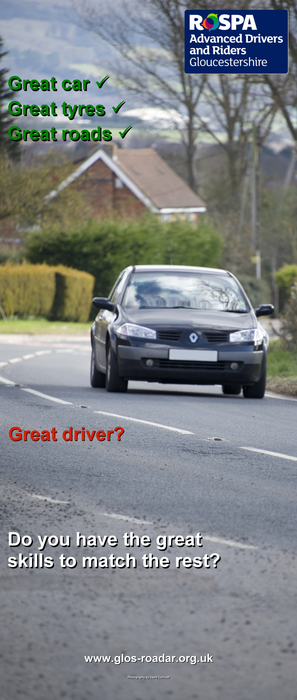What are the benefits?
These are some of the benefits enjoyed by advanced drivers and riders after training with Gloucestershire Advanced Drivers And Riders:
 Increased safety; keep yourself, your
Increased safety; keep yourself, your
passenger(s) and other road users safe
Reduced risk; using anticipation and
planning skills
Increased awareness; being more
observant and using enhanced handling
skills to anticipate changes around you
Increased passenger comfort; with
good forward planning and anticipation,
your driving / riding will become
smoother and more relaxed
More enjoyment; experience the
satisfaction of driving / riding from A to B
more smoothly with more time to react to
the unexpected
Greater control; by understanding and
knowing how to deal with the various
forces that affect your vehicle
Increased confidence; learn how to
anticipate and deal with expected and the
unexpected road and traffic situations
Reduced wear and tear; get more out
of your vehicle by learning advanced
machine control methods
Discounted insurance; many insurance
companies offer a discount to advanced
drivers / riders
Save money on fuel; using defensive
driving / riding and forward planning
techniques to achieve greater control and
better fuel efficiency
Enhance your CV; gain a professional
qualification you can put on your CV
What is advanced driving / riding?
Advanced driving / riding is the ability to control the position and speed of the vehicle safely, systematically and smoothly, using road and traffic conditions to progress unobtrusively with skill and responsibility.
This skill requires a positive but courteous attitude and a high standard of driving / riding competence based on concentration, effective all-round observation, anticipation, and planning. This must be co-ordinated with good handling skills.
An advanced driver / rider will always have their vehicle in the right place on the road, at the right time, travelling at the right speed with the correct gear engaged and can always stop safely on their own side of the road in the distance they can see to be clear (DSA, RoADAR, IAM, 1997).
What will you learn?
Our driver / rider training is provided on a one-to-one basis. All our tutors are volunteers and have passed the advanced driving / riding test, hold a current tutor qualification and are registered with RoADAR HQ.
You will learn how to drive / ride:
Safely – By being safer you give yourself more time to react, to both expected
and unexpected situations, and improve your own and passenger confidence in
your ability.
Systematically – By doing things in a systematic way, one thing at a time,
you will learn how to ensure your vehicle is in the right place, at the right speed,
in an appropriate gear and capable of being stopped, on your own side of the road,
in the distance you can see to be clear. We use the Police System of Car /
Motorcycle Control acronym IPSGA (Information, Position, Speed, Gear, Acceleration).
Smoothly – By learning how to use vehicle controls in a smoother, and more
controlled, way you and any passenger will feel more comfortable and relaxed.
At an appropriate Speed – Learn how to drive at the appropriate speed, making
progress and showing restraint when necessary.